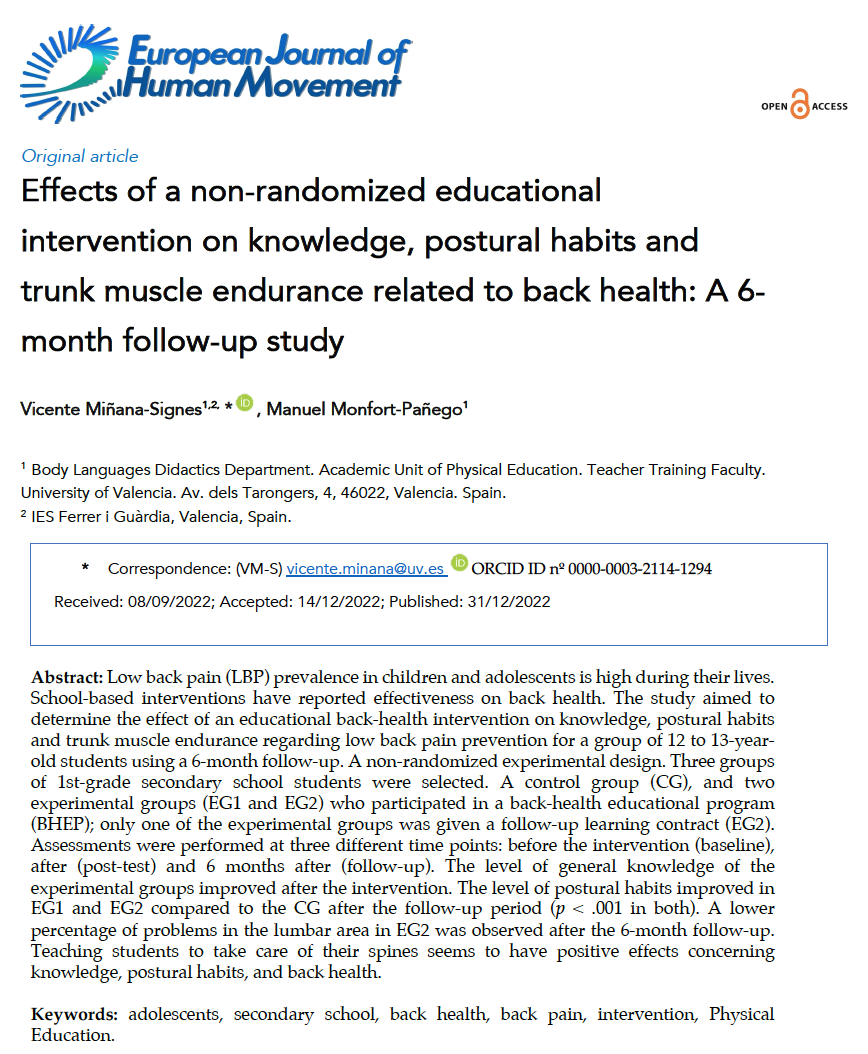
The prevalence of low back pain (LBP) in children and adolescents is high during their lifetime. School-based interventions have reported effectiveness on back health. The study aimed to determine the effect of an educational intervention on back health on knowledge, postural habits and trunk muscle strength in relation to the prevention of low back pain for a group of students from 12 to 13 years through a 6-month follow-up
EUROPEAN JOURNAL OF HUMAN MOVEMENT
Goal
The prevalence of low back pain (LBP) in children and adolescents is high during their lifetime. School-based interventions have reported effectiveness on back health. The study aimed to determine the effect of an educational intervention on back health on knowledge, postural habits and trunk muscle strength in relation to the prevention of low back pain for a group of students from 12 to 13 years through a 6-month follow-up.
Methodology
A non-randomized experimental design. Three groups of 1st year ESO students were selected. A control group (GC) and two experimental groups (EG1 and EG2) that participated in a back health education program (BHEP); only one of the experimental groups received a follow-up learning contract (EG2). Assessments were performed at three different times: before the intervention (baseline), after (post-test) and 6 months later (follow-up).
Results
The general knowledge level of the experimental groups improved after the intervention. The level of postural habits improved in EG1 and EG2 compared to CG after the follow-up period (p < .001 in both). An improvement in the resistance level of the trunk muscles after the intervention was only observed in the boys between EG2 and CG (p < 0.05). A lower percentage of low back problems was observed in EG2 after 6-month follow-up.
Conclusion
Teaching students to take care of their spine appears to have positive effects in terms of knowledge, postural habits and back health.





